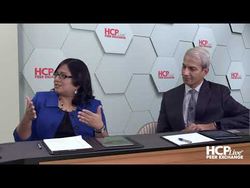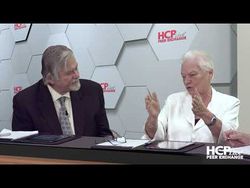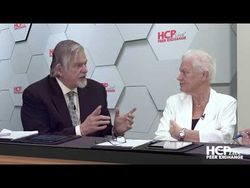Management of Beta Thalassemia - Episode 13
The Process for Gene Therapy in Beta-Thalassemia
Peter L. Salgo, MD: Let me ask just a few procedural things. People hear about lentiglobin gene therapy. What is the lentiglobin part of that?
Sujit Sheth, MD: That’s the virus. The virus that carries this gene and introduces it into your genome—transduces into genome—is a lentivirus.
Peter L. Salgo, MD: A lentivirus.
Sujit Sheth, MD: Which is in the same family as HIV.
Peter L. Salgo, MD: Right.
Sujit Sheth, MD: But it’s a modified virus. It’s not the HIV virus itself. It’s modified.
Peter L. Salgo, MD: But it’s already scary in terms of syntax.
Sujit Sheth, MD: Right. They put into this vector sequences that self-inactivate the actual viral part of it. We’ve not seen any issues with a viral infection in these individuals who have gotten gene therapy so far.
Peter L. Salgo, MD: You’re just using the virus as a syringe.
Sujit Sheth, MD: Yes, as a carrier.
Maria Domenica-Cappellini, MD: A carrier.
Farzana Sayani, MD: One analogy I heard recently was that HIV virus normally has an envelope and then there’s a letter. That’s the DNA that’s telling it to give you the HIV infection. Here what we’re doing is we’re taking out that letter and just using the envelope and then we’re putting in the gene that we’re interested in and then delivering it.
Peter L. Salgo, MD: You realize, of course, that we’re all very old. That’s snail mail. Nobody is using that anymore.
Thomas D. Coates, MD: Well, but they do electroporate the cells.
Maria Domenica-Cappellini, MD: But this is also progress in gene therapy and using viruses as a vector. Because going back to the first gene therapy, now the SCID [severe combined immunodeficiency], the immune-deficient children. Actually, there was some integration of the viral vector causing leukemia.
Peter L. Salgo, MD: There was a lot of bad press—let’s just put it that way—early on.
Maria Domenica-Cappellini, MD: That’s exactly it. But now, as he said, I believe this risk is over. At least we have to look at the viral aspect.
Peter L. Salgo, MD: Mechanically now, if you want to do gene therapy, let’s spell it out. You talked about conditioning. What does all that mean? What is this?
Sujit Sheth, MD: If a patient says, “Yes, I want gene therapy,” of course they go through the consenting process. You have to make sure the patient, the family, the relatives understand full well what they’re going through, just like with bone marrow transplant. They will then get their stem cells harvested. Usually a little bit of stimulation to your bone marrow, either G-CSF or plerixafor, stimulates your bone marrow to release some of these cells. Then they are apheresed—the stem cells are collected by an apheresis procedure. Those stem cells are then sent to a central laboratory, where the gene is introduced by the vector. They do a whole bunch of quality control and testing of that gene product. Then it’s ready for use. Once it’s ready for use, the patient has to be admitted to the hospital. The patient then gets conditioning chemotherapy, which is myeloablative, so it completely destroys your bone marrow.
Peter L. Salgo, MD: OK, now that’s a little scary.
Sujit Sheth, MD: That’s the scary part. And then they will get their own stem cells that have been transfected back. It takes a few days to a couple of weeks for those cells to find their way to the bone marrow, establish themselves, and start hematopoiesis.
Peter L. Salgo, MD: Are steroids used along the way?
Sujit Sheth, MD: Never.
Peter L. Salgo, MD: Never. But chemotherapy.
Maria Domenica-Cappellini, MD: Chemotherapy.
Sujit Sheth, MD: Chemotherapy, yes.
Peter L. Salgo, MD: My guess—correct me if I’m wrong—is that during this process, you don’t feel very well.
Sujit Sheth, MD: It’s very different from the cancer patients who are getting transplants because they’ve been so heavily pretreated with chemotherapy that their immune systems are shot, they have so much tissue damage, endothelial damage, epithelial damage. These are patients who are generally well, and it’s the first time they’ve gotten chemotherapy, so they generally don’t feel as bad.
Transcript edited for clarity.



